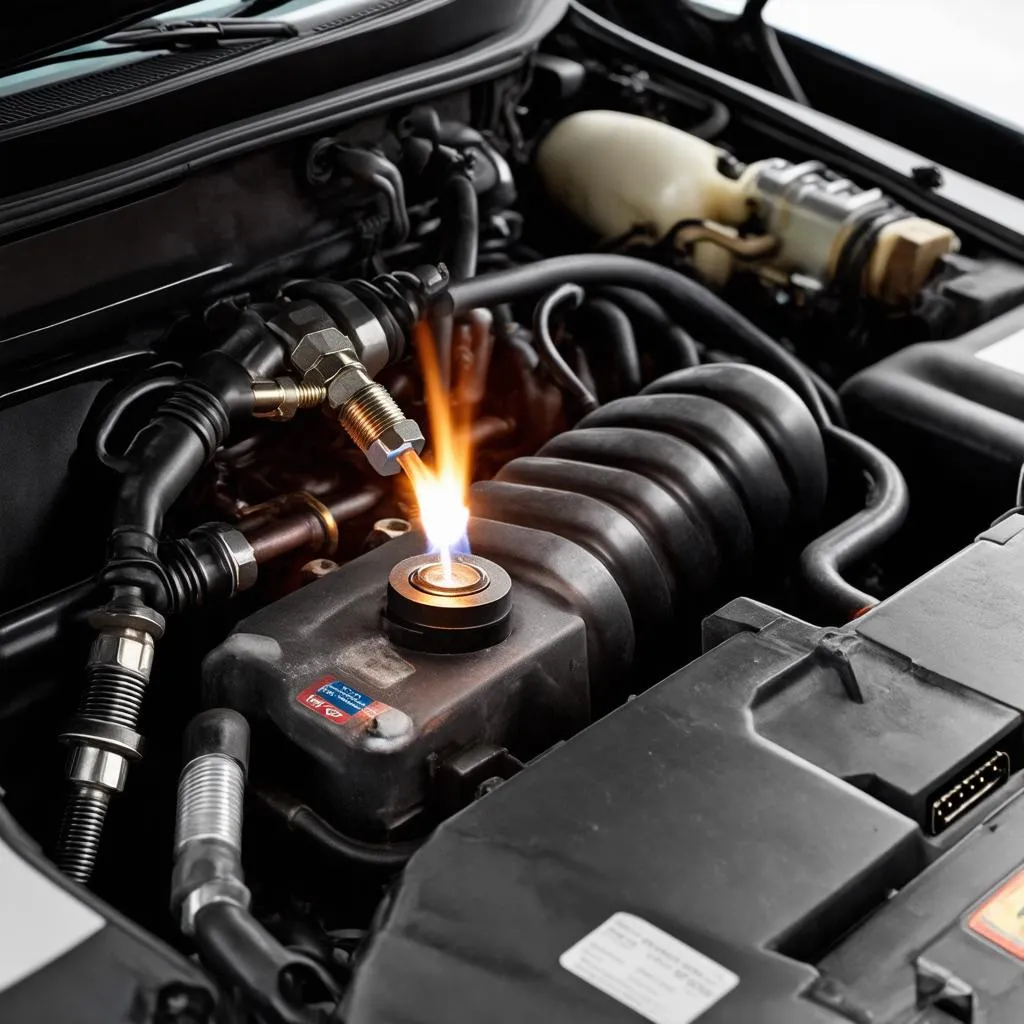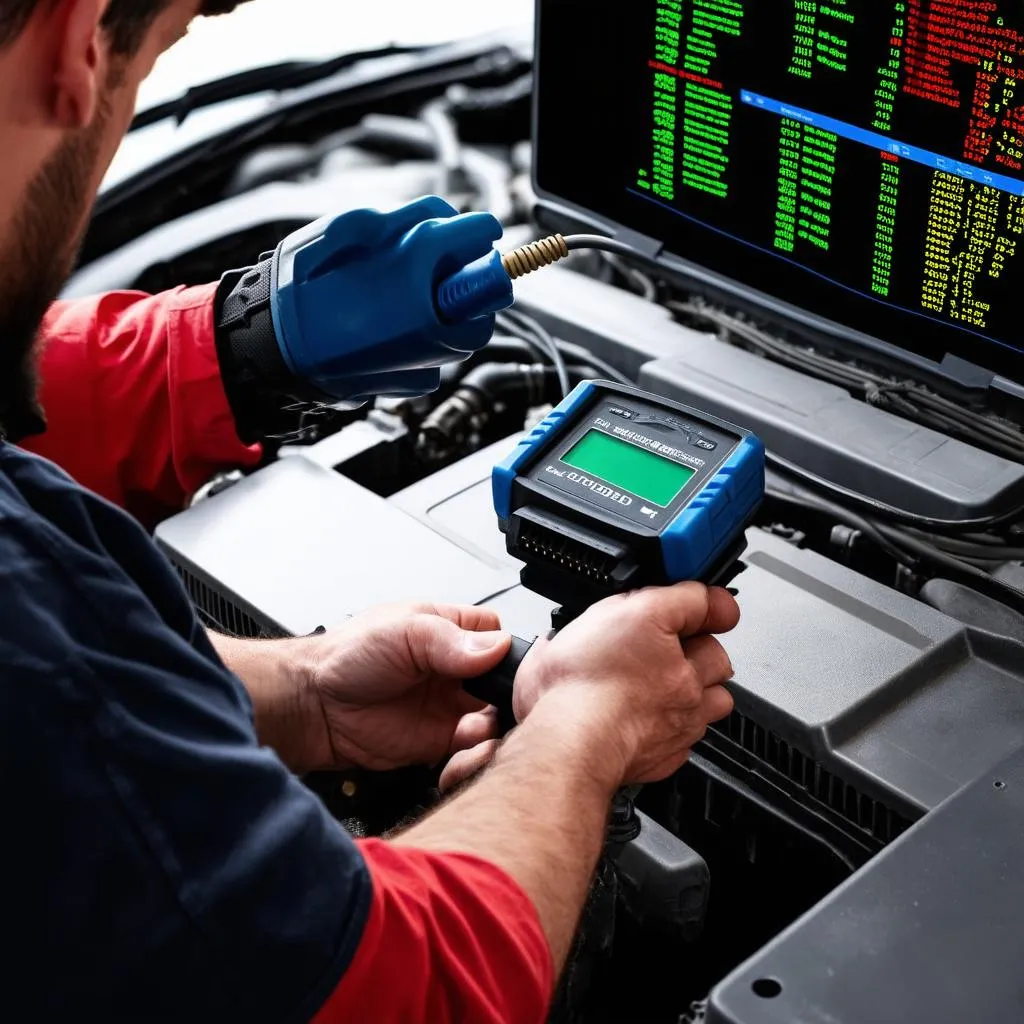Imagine cruising down the Pacific Coast Highway in your sleek 2020 Ford Mustang, the California sun warming your face. Suddenly, your engine stumbles, throwing a wrench (figuratively, hopefully!) into your road trip. This, my friend, is the dreaded engine misfire, and thankfully, your car’s onboard detective – the OBD-II system – is on the case!
Unmasking the Misfire: What Does It Mean?
Before we delve into the intricate workings of the OBD-II system, let’s understand what an engine misfire actually is. In essence, it’s the failure of the air-fuel mixture in one or more cylinders to ignite properly. This can be caused by a multitude of factors, from faulty spark plugs and clogged fuel injectors to serious issues like a failing ignition coil or even low compression.
Now, from a mechanic’s perspective, diagnosing a misfire involves pinpointing the root cause – a task made significantly easier thanks to the OBD-II system.
The OBD-II System: Your Car’s Sherlock Holmes
The On-Board Diagnostics II system, mandated in all vehicles sold in the United States since 1996, acts like a vigilant detective, constantly monitoring your engine’s performance. It utilizes various sensors to gather data, and when it detects an anomaly like a misfire, it triggers the “Check Engine” light on your dashboard.
But how does it detect a misfire, you ask?
The key lies in the Crankshaft Position Sensor. This sensor meticulously tracks the speed and position of the crankshaft as it rotates. A sudden change in this rotational speed, particularly during a specific cylinder’s firing cycle, indicates a misfire. The OBD-II system, using sophisticated algorithms, interprets this deviation as a misfire and logs a corresponding Diagnostic Trouble Code (DTC), like P0300 (random misfire) or P0302 (cylinder 2 misfire).
Think of it like this: You’re watching a synchronized swimming team, and suddenly, one swimmer misses a beat. The disruption is immediately obvious. That’s essentially what the crankshaft sensor picks up on when a cylinder misfires.
FAQs: Addressing Your Burning Questions
Here are some common questions car owners often have about engine misfires and the OBD-II system:
- Can a bad spark plug cause a misfire? Absolutely! A faulty spark plug can’t properly ignite the air-fuel mixture, leading to a misfire.
- Is it safe to drive with a misfire? While your car might still run, continuing to drive with a misfire can damage your catalytic converter and other engine components.
- Can I diagnose the problem myself? While OBD-II scanners are readily available, deciphering the codes and pinpointing the exact cause requires mechanical expertise.
Seeking Expert Help: Don’t Let Misfires Rain on Your Parade
Experiencing engine issues? Don’t let them dampen your spirits! Whether you’re facing a pesky P0301 code in your trusty Toyota Camry or a persistent misfire in your prized BMW M3, our team of expert mechanics is here to help.
Need help deciphering those cryptic OBD-II codes? Contact us on WhatsApp at +84767531508. Our team is available 24/7 to assist you with all your diagnostic needs.
Wrapping Up: Knowledge is Power
Understanding how your car’s OBD-II system detects engine misfires empowers you to address these issues proactively. Remember, a stitch in time saves nine, and this holds true for your car’s health too. Regular maintenance and timely diagnosis of warning signs can save you from costly repairs and keep your vehicle running smoothly for miles to come.
Have questions about other OBD-II codes or car maintenance tips? Check out our other informative articles here on Tech Car USA.
 OBD-II System Detecting Engine Misfire
OBD-II System Detecting Engine Misfire
 Mechanic Using OBD Scanner to Diagnose Misfire
Mechanic Using OBD Scanner to Diagnose Misfire